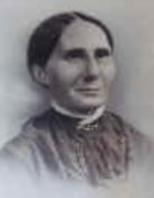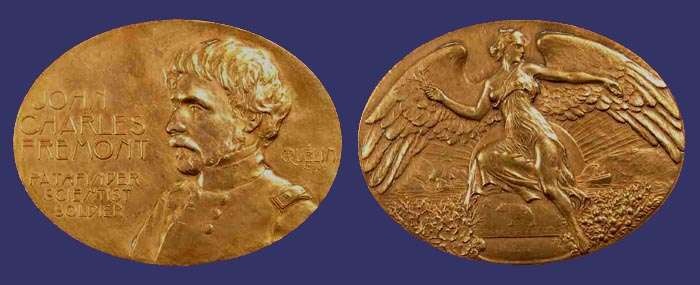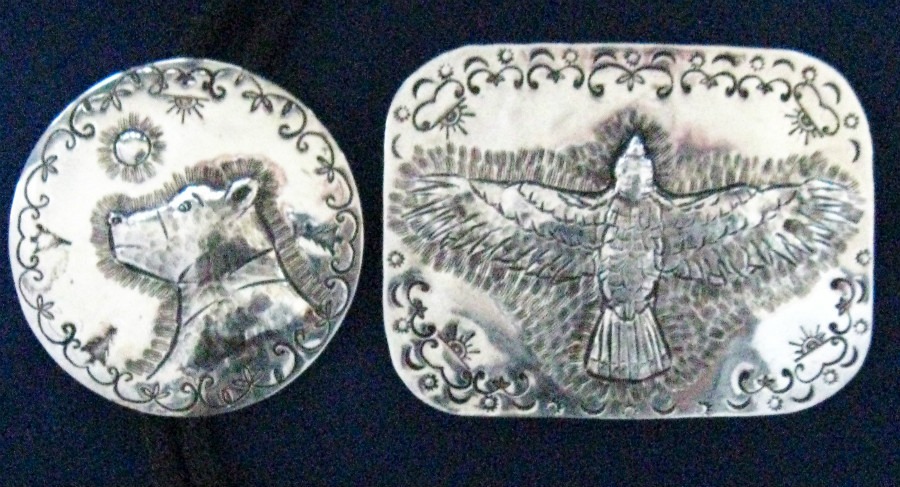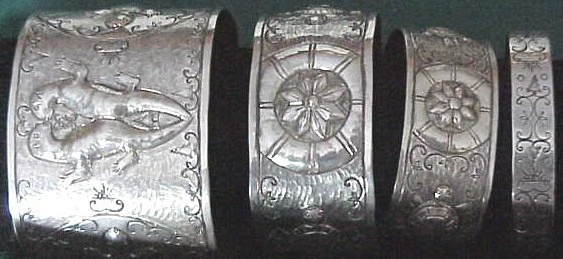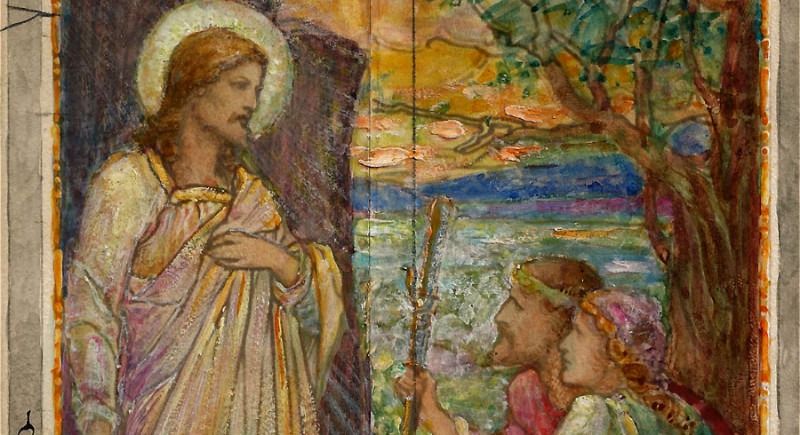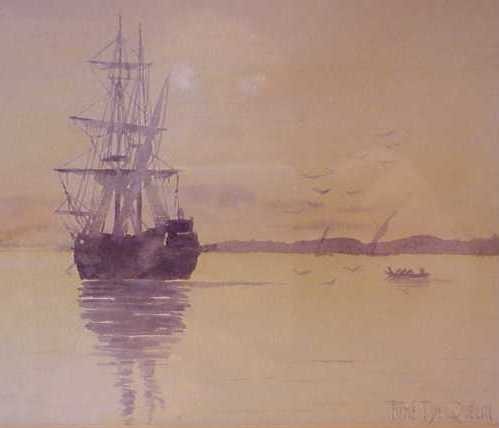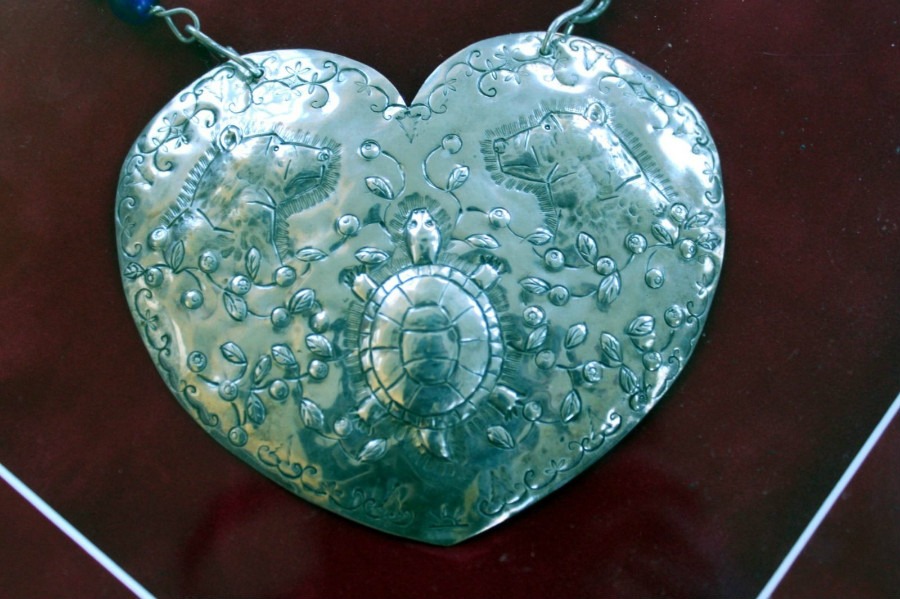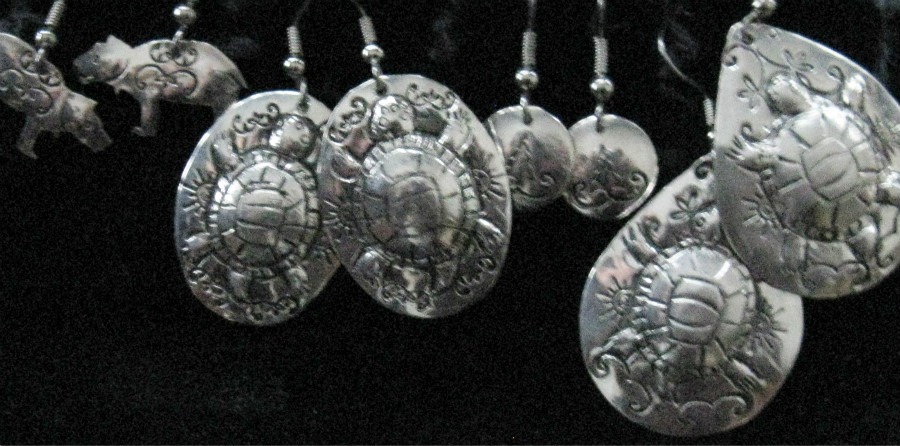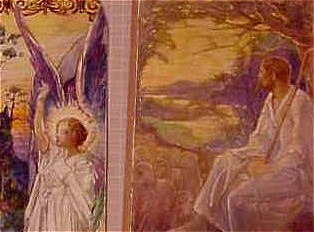Inspiration
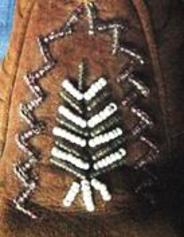
Paul-René and his Indigenous American art inspiration
Paul-René’s art is inspired by his ancestors and his many years spent with artists and crafts people across the US and Canada. Much of his early efforts were focused on giving a contemporary expression of traditional Woodland style art. Paul-René is enrolled with the Nulhegan Band of the Coosuk – one of the first Abenaki Nation Bands to gain state recognition.
Four tribes of Abenaki became recognized in the State of Vermont in the mid-2010s. Before this Wôbanaki people from many places had no recognition except for the reserves in Maine and Canada. The Abenaki in Canada hve two reserves which have recently begun to increase in population. They had population decline due to lack of jobs and before 1984 women, marrying non-Indigenous men lost their status under the government's "Indian Act". Many Abenaki women and their children were not able to find recognition in either country until recently. Canadian law changed in 1984 and some Canadian Abenaki were able to return to Odanak and Wôlinak in Quebec as "Status Indians". However, many Abenaki descendants are left off government rolls in Canada. Vermont state recognition is a way for Abenaki descendants from Vermont and Abenakis from Canada who have lived in Vermont for many years to finally be recognized by a government, in this case the State of Vermont.
Paul-René is enrolled Nulhegan Abenaki https://abenakitribe.org/ . Also, Andrea is Shawnee and is enrolled as a spouse.
The four Abenaki tribes are all covered under the Indian Arts and Crafts Act of 1990 https://www.doi.gov/iacb/act#:~:text=The%20Indian%20Arts%20and%20Crafts%20Act%20(IACA)%20of%201990%20(,products%20within%20the%20United%20States . and many members are represented by the Vermont Abenaki Artist Association https://abenaki-edu.org/vermont-abenaki-artists-associations/
In Abenaki “Koas” is a ‘Little Pine’ and “Koasek” or "Coosuk" is ‘place of the little pines’. This pine tree with its White Roots – is an important symbol to Paul-René as it was the symbol used in his family. Paul-René’s grandmother’s moccasins have little pine trees on them
Below are photos of the moccasins and a photo of Paul-Rene’s sister with our grandmother in 1963.

This pine tree symbol helps Paul-René feel connected Wôbanaki ancestors. Much of Paul-René’s art work includes the pine tree symbol. Through all these influences (as well Bear Clan emphasis) Paul-René has remembered his roots. This can be seen in the use of many turtles, trees, flowers, fiddle-head ferns, bears, other woodland animals and celestial bodies such as moon, sun, and stars- all important Eastern Native art symbolism.
One branch of the family lived in Newfoundland for many generations in and out of Bonavista Bay and traveling the St. Lawrence and Labrador coast regularly. Some of the family left Newfoundland after several generations to return to northern New England and New York. The Indigenous art came together– and all have contributed to his artwork.
Helen Merritt Smith about 1982 with Paul-René’s only biological sibling, Mary Elizabeth Tamburro in 1982. His sister died in 1985 and Helen 5 years later. The other photo is of Mary Elizabeth at a Powwow in Massachusetts, 1973. Powwows were something some members of the family were involved in for many years.
Helen was Al Merritt’s sister shown in the photo below at Mashpee Reservation, Massachusetts.
Helen was the keeper stories in the family. She learned as a child from Paul-René’s great-grandmother Maria Hancock who raised Helen after Helen's mother died. The stories were about our matrilineal Bear Clan and ancestry. Her stories described ancestors that traveled to and from Newfoundland on the St Lawrence River. It seems that all family travel was by boat and canoe. Some of the family boat trips went big distances.
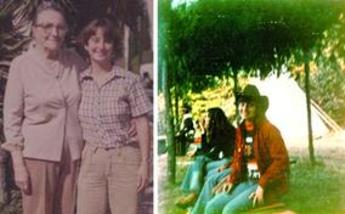
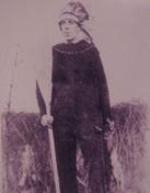
Al Merritt at Mashpee Powwow 1928
Several family members emphasized our Algonquian ancestral culture by attending Native events in the early 1900s. Helen told me she made this for her brother to wear along with beadwork she did – in the form of little turtles for Ed Amos - Mashpee medicine man whose name “Slow Turtle”. This name later went to Ed's nephew John Peters in Massachusetts.
Maria Ash Pike 1870 a Native Newfoundlander, moved to Boston 1870′s.
The image to the right shows Maria Ash Pike, of Algonquian ancestry, born in Newfoundland. She is the one who inspired the matrilineal line of Paul René’s family from which he gets his Bear clan decent. His family was living on various Islands and traveled around Labrador, Newfoundland, and the St. Laurence River as far back to before 1800 in our oral tradition. In several generations of Native marriages there were several Native Nations incorporated into his family. This has lead to interest in researching Metis and other mixed heritages. Many people called "fake Indians" or "Wannabees" etc. have real Indigenous stories to foreground - being Indigenous has been hard to verify in the Eastern parts of North America.
